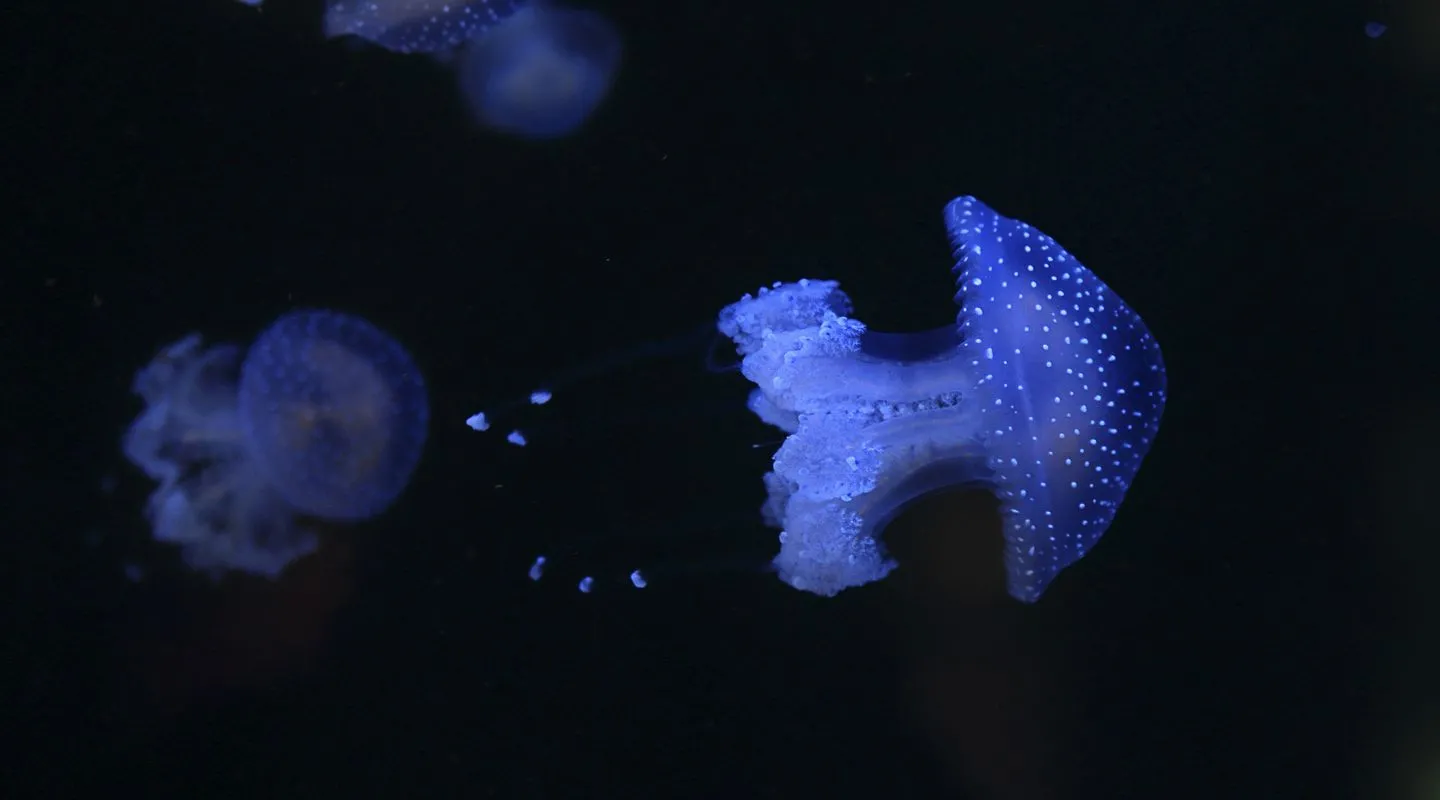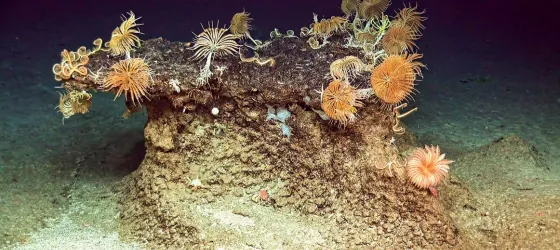Where is the animal to be found?
It lives mainly in temperate waters near the coast, in estuaries and in the vicinity of ports. It can be seen swimming close to the surface.
How can it be recognised?
This Australian jellyfish can be recognised by its blue-tinged umbrella speckled with white spots. It has 8 oral arms with endings that branch out into the shape of a cauliflower. Its tentacles are located at the end of these oral arms.
Like all jellyfish, the Australian spotted jellyfish has tentacles that sting, but is not considered to be dangerous to humans. Its umbrella measures between 30 and 50 cm in diameter but can reach a record size of 70 cm.
What is distinctive about it?
It was accidentally introduced into the Gulf of Mexico. According to some sources, it was carried in the water tanks of ships.It is now considered an invasive species: its proliferation is responsible for the decrease in fish larvae and eggs.








